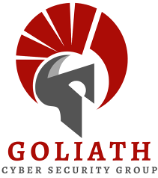For the last couple of years, insurance companies have become increasingly careful about underwriting cyber-insurance policies, making it harder for organizations to purchase policies at an affordable price point with the coverage level needed. It’s not difficult to figure out why insurers are hesitant, cyberattacks continue to increase while losses may exceed what the insurance market is able to absorb.
The cyber insurance market continues to be marked by volatility, keeping insureds and underwriters alike on their toes, changing Dynamics of Cyber Insurance.
In early 2021, the market shifted very abruptly, and increasing frequency, severity, and the sophistication of cybercrime pushed cyber underwriters to re-evaluate their approach to pricing, appetite, coverage, and underwriting.
It’s not surprising that insurers themselves are now proponents of more effective cyber-risk management for policy holders. Expect to see underwriters do the following:
- Deny coverage if you don’t have bare-minimum controls in place. This may include raising the bar for minimum controls. For example, traditional MFA may not be accepted as a strong enough control due to man-in-the-middle (MitM) attacks.
- Tie premiums to the maturity of your security controls.
- Include additional conditions and limitations on policies based on the security posture of policyholders and the controls in place when an incident occurs.
Below are some of the security controls that most cyber underwriters expect to see. They will differ based on carrier, individual underwriter, organization size, industry, etc. and are subject to change.
1) Comprehensive Multi-factor Authentication (MFA) plus Strong Password Controls
MFA (privileged access, remote access, remote cloud-based apps/O365) and strong password controls protect an organization against phishing, social engineering and password brute-force attacks and help prevent logins from attackers exploiting weak or stolen credentials. For many cyber underwriters, this is the most important control.
2) Network Segregation and Network Segmentation
Network segregation (separation of critical networks from the internet) and network segmentation (splitting larger networks into smaller segments) help reduce the risk and potential impact of ransomware attacks and will improve IT professionals’ auditing and alerting capabilities, which will assist in identifying cyber threats and responding to them.
3) Strong Data Backup Strategy
A strong data backup strategy is typically part of a solid disaster recovery/business continuity plan.
Underwriters want to see daily data backups, backups stored in more than one location, access rights limited to data backups, etc.
4) Disabled Administrative Privileges on Endpoints
Disabling administrative privileges on endpoints improves security posture. An administrative end-user on an endpoint for even a few minutes can lead to catastrophic data breaches if the endpoint is compromised.
5) Security Awareness Training for Employees
Security awareness has never been more important. The threat environment is evolving rapidly. Regular and frequent employee training is a must in today’s environment.
6) Endpoint Detection and Response (EDR) and Anti-Malware
EDR provides advanced measures for detecting threats and provides the ability to identify the origin of an attack as well as how it is spreading.
Anti-malware is a version of EDR — it scans your system for known malware such as trojans, worms, and ransomware, and upon detecting them, removes them. Underwriters look for both.
7) Sender Policy Framework (SPF)
SPF plays an important role in email authentication. It helps prevent emails from unauthorized senders from hitting an employee’s inbox. Underwriters look for this defensive tool.
8) 24/7 Security Operation Center (SOC)
A dedicated SOC acts as the first line of defense against cyber threats. The analysis and threat hunting conducted by SOC teams help prevent attacks from occurring in the first place.
SOCs provide increased visibility and control over security systems, enabling the organization to stay ahead of potential attackers. Cyber underwriters view this as a key proactive approach to network security.
9) Security Information Event Management (SIEM) Platform
SIEM tools collect and aggregate log and event data to help identify and track breaches.
They are powerful systems that provide security professionals with insight into what is happening in their IT environment and help track relevant events that have happened in the past.
10) Strong Service Accounts Security in Active Directory
Assigning service accounts in built-in privileged groups, such as the local Administrators or Domain Admins group, can be risky. Underwriters want service accounts removed from Domain Admin groups.
————–
The implementation of these top 10 network security controls does not represent the full extent of the cyber underwriting process nor will they be the basis for a premium discount.
In addition to the above, there are a host of additional controls, policies, procedures, and processes that underwriters will be evaluating. But checking these boxes will provide insureds with a solid foundation designed to meet the baseline expectations of cyber underwriters.
Goliath Cyber along with our partners at Coverdash, we help bring you the proper coverage from a Cybersecurity and Cyber Insurance perspective, working together as a team protecting your business!


Comments are closed